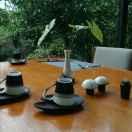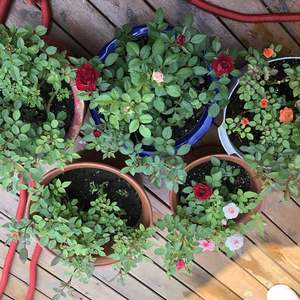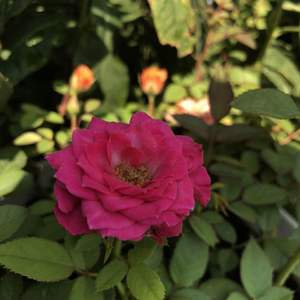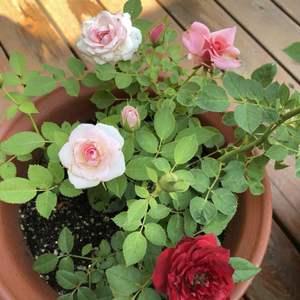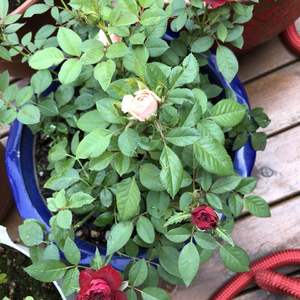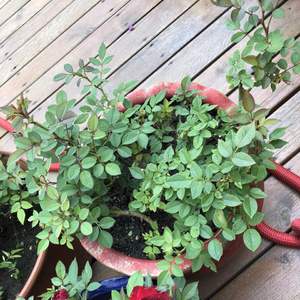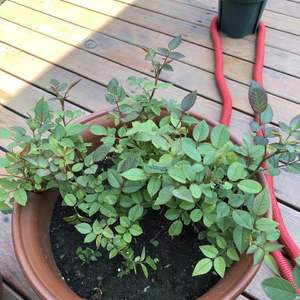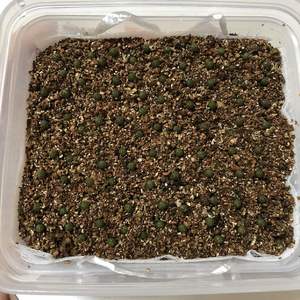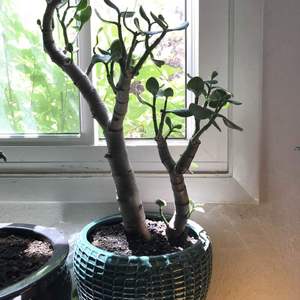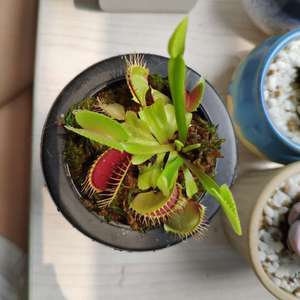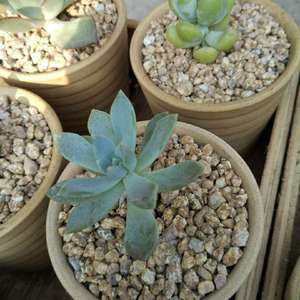文章
Miss Chen
2018年07月05日

A ripe rind is one sign a butternut squash (Cucurbita moschata) is ready to pick, and there are other signs. An annual winter squash vine, butternut squash grows 3/4 to 1 1/2 feet tall with a vine 10 to 15 feet long. Creamy-white to orange-yellow flowers appear in late spring and orange-fleshed fruits develop, which ripen in fall. Changes in the vine and changes in the color and texture of the fruit are some signs to look for that tell you butternut squash is ready for harvesting.
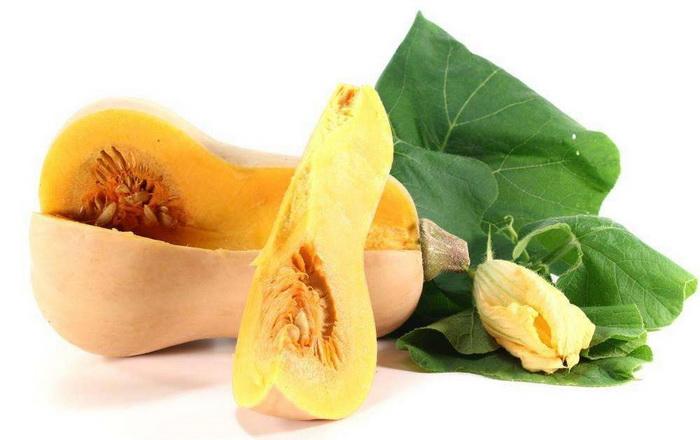
Days From Sowing
Providing severe weather conditions such as drought or prolonged cold temperatures don't occur, butternut squash fruits ripen a predictable number of days after sowing. In regular growing conditions, it takes 80 to 100 days after the seed was sown.
Drought stresses plants, and may speed up ripening. However, cold weather slows down butternut squash growth, and then fruit may ripen later than expected.
Vine Condition
When butternut squash fruits are ready for picking, the vine has done its job. It stops growing and begins to die back. If your butternut squash vine stops producing new shoots and leaves, and the existing leaves begin to yellow and wilt, the fruit is probably nearly ripe.
Skin Appearance
Butternut squash skin is light whitish-green, smooth and shiny while the fruit is growing. As they ripen, the fruits turn deep tan and become dull and dry.
Skin Texture
A change in skin texture is another sign of ripeness in butternut squash. Slightly soft when the fruit is growing, butternut squash skin becomes very tough when the fruit is ripe.
Harvest Time
When butternut squash fruit are ready to harvest, cut the stems with pruning shears or a sharp knife.

Cut the squash stems 1 inch from the fruit, and put them in a cool, dark, dry place. Don't allow the fruit to touch each other. Store the squash at 50 degrees Fahrenheit and 50 to 75 percent humidity and it will keep for two to three months. Check the fruit every one or two weeks, and remove and discard any that look diseased or have begun to decay.

Days From Sowing
Providing severe weather conditions such as drought or prolonged cold temperatures don't occur, butternut squash fruits ripen a predictable number of days after sowing. In regular growing conditions, it takes 80 to 100 days after the seed was sown.
Drought stresses plants, and may speed up ripening. However, cold weather slows down butternut squash growth, and then fruit may ripen later than expected.
Vine Condition
When butternut squash fruits are ready for picking, the vine has done its job. It stops growing and begins to die back. If your butternut squash vine stops producing new shoots and leaves, and the existing leaves begin to yellow and wilt, the fruit is probably nearly ripe.
Skin Appearance
Butternut squash skin is light whitish-green, smooth and shiny while the fruit is growing. As they ripen, the fruits turn deep tan and become dull and dry.
Skin Texture
A change in skin texture is another sign of ripeness in butternut squash. Slightly soft when the fruit is growing, butternut squash skin becomes very tough when the fruit is ripe.
Harvest Time
When butternut squash fruit are ready to harvest, cut the stems with pruning shears or a sharp knife.

Cut the squash stems 1 inch from the fruit, and put them in a cool, dark, dry place. Don't allow the fruit to touch each other. Store the squash at 50 degrees Fahrenheit and 50 to 75 percent humidity and it will keep for two to three months. Check the fruit every one or two weeks, and remove and discard any that look diseased or have begun to decay.
0
0
文章
Miss Chen
2018年07月03日

Description: This perennial wildflower is about 1-2' tall. It is unbranched, except near the apex, where the flowerheads occur. The central stem is pale green and more or less covered with white cobwebby hairs. The alternate leaves are up to 6" long and 1" across, becoming slightly smaller as they ascend the stems. Each fern-like leaf is pale to medium green, elliptic in outline, and widest in the middle – however, its structure is either simple-pinnate or double-pinnate and its overlapping leaflets are either simple-pinnate or pinnatifid. The leaves and sometimes their leaflets (when they are simple-pinnate) are upward-angled along their rachises (central stalks), while pinnatifid leaflets and subleaflets are either curled, crinkled, or flat. Like the stems, the leaves and their subdivisions often have fine cobwebby hairs. The leaves are sessile.
The upper stems produce flat-headed panicles (compound corymbs) of small flowerheads. Each flowerhead is about ¼" across, consisting of 5 ray florets (their petaloid rays are white, rarely rose or other pastel colors) and a similar number of disk florets that have cream or pale yellow corollas. The petaloid rays are often slightly notched at their tips. The floral bracts (phyllaries) are pale green and lanceolate-oblong; they often have cobwebby hairs. All parts of this plant exude a distinctive aroma that is somewhat soapy and astringent. The blooming period occurs from early to mid-summer and lasts about a month. Each floret is replaced by an achene that is oblong and somewhat flattened; it lacks a tuft of hairs. The root system produces abundant rhizomes, often forming clonal colonies of plants.

Cultivation: The preference is full or partial sun, mesic to dry conditions, and a somewhat heavy clay-loam soil.
Range & Habitat: Yarrow is a common plant that has naturalized in all counties of Illinois (see Distribution Map). The variety of Yarrow that occurs in Illinois is probably native to Eurasia, although there is a variety of this plant that is native to western North America. This latter variety tends to be smaller in size and its foliage is more heavily covered with woolly hairs. Habitats include mesic to dry prairies, pastures, fallow fields, grassy waste areas, and edges of paths, yards, or hedges. Disturbed areas are preferred; Yarrow persists in native habitats (e.g., prairies) to a limited extent. Yarrow is often cultivated in flower and herbal gardens, from where it occasionally escapes.

Faunal Associations: The nectar of the flowers attracts many kinds of insects, especially flies and wasps. Among the flies are such visitors as bee flies, Syrphid flies (including drone flies), thick-headed flies, Tachinid flies, flesh flies, Anthomyiid flies, and others. Halictid and other short-tongued bees occasionally visitor the flowers, where they suck nectar and collect pollen. Many species of grasshoppers feed on Yarrow (see Grasshopper Table), as do several aphids, a seed bug, a flower thrips, leaf beetles, and caterpillars of some moths (see Insect Table). Sometimes Mordella spp. (Tumbling Flower Beetles) are found on the flowerheads. Because the foliage of Yarrow has a bitter and biting taste, it is rarely consumed by most mammalian herbivores. However, sheep will eat it when the opportunity arises.

Photographic Location: Judge Webber Park and Meadowbrook Park in Urbana, Illinois.
Comments: Among members of the Aster family, the fern-like foliage of Yarrow is rather unusual and it has a distinctive odor. Other members of the Aster family with this kind of foliage include Anthemis spp. (Mayweed), Matricaria spp. (Chamomile), and Tanacetum vulgare (Tansy). Unlike Yarrow, species of Mayweed and Chamomile produce daisy-like flowerheads with long petaloid rays. Tansy is a larger plant with medium to dark green foliage. While its flowerheads have a similar size and structure as compared to those of Yarrow, they are bright yellow and their petaloid rays are even smaller in size or absent.
The upper stems produce flat-headed panicles (compound corymbs) of small flowerheads. Each flowerhead is about ¼" across, consisting of 5 ray florets (their petaloid rays are white, rarely rose or other pastel colors) and a similar number of disk florets that have cream or pale yellow corollas. The petaloid rays are often slightly notched at their tips. The floral bracts (phyllaries) are pale green and lanceolate-oblong; they often have cobwebby hairs. All parts of this plant exude a distinctive aroma that is somewhat soapy and astringent. The blooming period occurs from early to mid-summer and lasts about a month. Each floret is replaced by an achene that is oblong and somewhat flattened; it lacks a tuft of hairs. The root system produces abundant rhizomes, often forming clonal colonies of plants.

Cultivation: The preference is full or partial sun, mesic to dry conditions, and a somewhat heavy clay-loam soil.
Range & Habitat: Yarrow is a common plant that has naturalized in all counties of Illinois (see Distribution Map). The variety of Yarrow that occurs in Illinois is probably native to Eurasia, although there is a variety of this plant that is native to western North America. This latter variety tends to be smaller in size and its foliage is more heavily covered with woolly hairs. Habitats include mesic to dry prairies, pastures, fallow fields, grassy waste areas, and edges of paths, yards, or hedges. Disturbed areas are preferred; Yarrow persists in native habitats (e.g., prairies) to a limited extent. Yarrow is often cultivated in flower and herbal gardens, from where it occasionally escapes.

Faunal Associations: The nectar of the flowers attracts many kinds of insects, especially flies and wasps. Among the flies are such visitors as bee flies, Syrphid flies (including drone flies), thick-headed flies, Tachinid flies, flesh flies, Anthomyiid flies, and others. Halictid and other short-tongued bees occasionally visitor the flowers, where they suck nectar and collect pollen. Many species of grasshoppers feed on Yarrow (see Grasshopper Table), as do several aphids, a seed bug, a flower thrips, leaf beetles, and caterpillars of some moths (see Insect Table). Sometimes Mordella spp. (Tumbling Flower Beetles) are found on the flowerheads. Because the foliage of Yarrow has a bitter and biting taste, it is rarely consumed by most mammalian herbivores. However, sheep will eat it when the opportunity arises.

Photographic Location: Judge Webber Park and Meadowbrook Park in Urbana, Illinois.
Comments: Among members of the Aster family, the fern-like foliage of Yarrow is rather unusual and it has a distinctive odor. Other members of the Aster family with this kind of foliage include Anthemis spp. (Mayweed), Matricaria spp. (Chamomile), and Tanacetum vulgare (Tansy). Unlike Yarrow, species of Mayweed and Chamomile produce daisy-like flowerheads with long petaloid rays. Tansy is a larger plant with medium to dark green foliage. While its flowerheads have a similar size and structure as compared to those of Yarrow, they are bright yellow and their petaloid rays are even smaller in size or absent.
0
0
文章
Miss Chen
2018年07月03日

Description: This plant is a summer annual about ½–2' tall that is either unbranched or occasionally branched. The stems are light to medium green, terete, and moderately covered with a combination of spreading hairs, curved hairs, and short pubescence. The alternate leaves are more closely spaced together toward the apex of the plant rather than the bottom, providing it with a flat-topped appearance. The leaf blades are up to 3" long and 1" across; they are medium green, lanceolate, and crenate with widely spaced blunt teeth to nearly smooth. The upper surfaces of the blades are sparsely canescent, sparsely covered with appressed hairs, or hairless. The slender petioles are up to 1" long; they are about one-third the length of their blades and usually short-pubescent.
Virginia Mercury is monoecious, bearing both staminate (male) and pistillate (female) flowers on the same plant. Both male and female flowers develop within the same foliaceous bracts from the axils of the leaves. These bracts are sessile (or nearly so), up to ½" tall, and a little more across; they are either open or loosely folded around the flowers. Individual bracts are medium green, more or less hairy, palmately lobed (10-15 lobes), and ciliate along their margins. Individual lobes are linear-lanceolate. Within each bract, a spike of staminate flowers develops. At maturity, each spike is up to ¾" long. Each staminate flower is less than 1/8" (3 mm.) across, consisting of a 4-lobed calyx, no petals, and several stamens. The staminate flowers are densely packed along the upper half of each spike. Within the same bract, there are 1-3 sessile pistillate flowers that are largely hidden from view. Each pistillate flower is about ¼" across, consisting of insignificant sepals, no petals, and a 3-valved globoid ovary with short divided styles. The blooming period occurs from mid-summer into the fall and lasts about 2-3 months. Only a few flowers are in bloom at the same time. Cross-pollination is by wind. Each pistillate flower matures into a 3-celled seed capsule; each cell of the capsule contains a single ovoid-oblongoid seed about 1-2 mm. long. This plant reproduces by reseeding itself.
Cultivation: The preference is partial sun, mesic conditions, and a fertile loam, although other soil types are tolerated. Most growth and development occurs during the summer and early fall.

Range & Habitat: The native Virginia Mercury is occasional to locally common in the southern half of Illinois, becoming uncommon in the northern half of the state (see Distribution Map). Habitats include disturbed open woodlands, rocky woodlands, thinly wooded bluffs, woodland borders, thickets, disturbed areas of prairies and weedy meadows, partially-shaded gravelly seeps, cropland and abandoned fields, areas along railroads and roadsides, flower gardens underneath trees, and areas adjacent to the foundations of buildings. This plant has low fidelity to any particular habitat.
Faunal Associations: The flea beetles Hornaltica bicolorata and Margaridisa atriventris feed on Acalypha spp. The Mourning Dove, Swamp Sparrow, and possibly other birds eat the seeds, while White-Tailed Deer browse on the foliage, primarily during the summer and fall. Virginia Mercury lacks the toxic white latex that is a typical characteristic of other species in the Spurge family (Euphorbiaceae).
Photographic Location: A flower garden underneath a tree in downtown Urbana, Illinois.

Comments: Virginia Mercury is somewhat weedy, although it is less aggressive and common than Acalypha rhomboidea (Rhomboid Mercury). In the past, Rhomboid Mercury and Acalypha deamii (Deam's Mercury) were considered varieties of Virginia Mercury, but they are now regarded as distinct species. Virginia Mercury differs from these latter two species by its more hairy stems, more narrow leaves, more numerous lobes (10-15) on its foliaceous bracts, and slightly longer staminate spikes that are exerted beyond the lobes of the bracts. Another species, Acalypha graciliens (Slender Mercury), has even more slender leaves than Virginia Mercury and its petioles are shorter (about one-fourth the length of its leaves). Slender Mercury usually has longer staminate spikes (at least 1" long), although there is an uncommon variety (var. monococca) that has staminate spikes about the same length as Virginia Mercury. Individual seed capsules of Acalypha graciliens var. monococca have one seed each, while seed capsules of Virginia Mercury have 3 seeds each. Another common name of Acalypha virginica is Virginia Copperleaf.
Virginia Mercury is monoecious, bearing both staminate (male) and pistillate (female) flowers on the same plant. Both male and female flowers develop within the same foliaceous bracts from the axils of the leaves. These bracts are sessile (or nearly so), up to ½" tall, and a little more across; they are either open or loosely folded around the flowers. Individual bracts are medium green, more or less hairy, palmately lobed (10-15 lobes), and ciliate along their margins. Individual lobes are linear-lanceolate. Within each bract, a spike of staminate flowers develops. At maturity, each spike is up to ¾" long. Each staminate flower is less than 1/8" (3 mm.) across, consisting of a 4-lobed calyx, no petals, and several stamens. The staminate flowers are densely packed along the upper half of each spike. Within the same bract, there are 1-3 sessile pistillate flowers that are largely hidden from view. Each pistillate flower is about ¼" across, consisting of insignificant sepals, no petals, and a 3-valved globoid ovary with short divided styles. The blooming period occurs from mid-summer into the fall and lasts about 2-3 months. Only a few flowers are in bloom at the same time. Cross-pollination is by wind. Each pistillate flower matures into a 3-celled seed capsule; each cell of the capsule contains a single ovoid-oblongoid seed about 1-2 mm. long. This plant reproduces by reseeding itself.
Cultivation: The preference is partial sun, mesic conditions, and a fertile loam, although other soil types are tolerated. Most growth and development occurs during the summer and early fall.

Range & Habitat: The native Virginia Mercury is occasional to locally common in the southern half of Illinois, becoming uncommon in the northern half of the state (see Distribution Map). Habitats include disturbed open woodlands, rocky woodlands, thinly wooded bluffs, woodland borders, thickets, disturbed areas of prairies and weedy meadows, partially-shaded gravelly seeps, cropland and abandoned fields, areas along railroads and roadsides, flower gardens underneath trees, and areas adjacent to the foundations of buildings. This plant has low fidelity to any particular habitat.
Faunal Associations: The flea beetles Hornaltica bicolorata and Margaridisa atriventris feed on Acalypha spp. The Mourning Dove, Swamp Sparrow, and possibly other birds eat the seeds, while White-Tailed Deer browse on the foliage, primarily during the summer and fall. Virginia Mercury lacks the toxic white latex that is a typical characteristic of other species in the Spurge family (Euphorbiaceae).
Photographic Location: A flower garden underneath a tree in downtown Urbana, Illinois.

Comments: Virginia Mercury is somewhat weedy, although it is less aggressive and common than Acalypha rhomboidea (Rhomboid Mercury). In the past, Rhomboid Mercury and Acalypha deamii (Deam's Mercury) were considered varieties of Virginia Mercury, but they are now regarded as distinct species. Virginia Mercury differs from these latter two species by its more hairy stems, more narrow leaves, more numerous lobes (10-15) on its foliaceous bracts, and slightly longer staminate spikes that are exerted beyond the lobes of the bracts. Another species, Acalypha graciliens (Slender Mercury), has even more slender leaves than Virginia Mercury and its petioles are shorter (about one-fourth the length of its leaves). Slender Mercury usually has longer staminate spikes (at least 1" long), although there is an uncommon variety (var. monococca) that has staminate spikes about the same length as Virginia Mercury. Individual seed capsules of Acalypha graciliens var. monococca have one seed each, while seed capsules of Virginia Mercury have 3 seeds each. Another common name of Acalypha virginica is Virginia Copperleaf.
0
0
文章
Miss Chen
2018年07月03日

Description: This annual plant is ½–2' tall, and usually unbranched. The central stem has lines of fine white hairs, or is glabrous. The alternate leaves are up to 3½" long and 1" across, with long narrow petioles that are slightly hairy. They are lanceolate or ovate, with bluntly serrated margins and conspicuous pinnate venation. There is a tendency for the leaves to congregate together near the top of the central stem, or any side stems that may be present. Where the petiole of each leaf meets the stem, there is a conspicuous bract that wraps around the inflorescence consisting of a green cyathium. This bract is slightly ciliate along the edges, and has 5-9 lobes. The cyathium contains tiny staminate and pistillate flowers without sepals and petals. The staminate flower is covered with yellow pollen, while the pistillate flower produces a 3-lobed spheroid fruit that is typical of the spurges. Each fruit contains three seeds. The blooming period occurs from about mid-summer until frost during the fall, and lasts one or more months. There is no floral scent. The root system consists of a central taproot.
Cultivation: The preference is light shade to full sun, and moist to slightly dry conditions. This plant often grows in fertile, loamy soil, but can tolerate gravelly or clay soil as well. This plant is easy and undemanding, and may volunteer spontaneously in a wildflower garden or ecological restoration. However, it is rather common and weedy.
Range & Habitat: The native Rhomboid Mercury occurs in every county of Illinois, and it is quite common (see Distribution Map). This is a rather inconspicuous plant that is easily overlooked because of the lack of showy flowers. Habitats include disturbed areas of moist prairies, limestone glades, openings or lightly shaded areas of floodplain forests, thickets, seeps, stream banks, ditches, fields, fence rows, roadsides, areas along railroads, vacant lots, poorly maintained lawns and gardens, and waste areas. This plant prefers moist disturbed areas.
Faunal Associations: Like other members of the Spurge family that occur in Illinois, the seeds are attractive to such birds as the Mourning Dove and Greater Prairie Chicken; they may also be attractive to the Bobwhite, Horned Lark, and Wild Turkey. The herbaceous Acalypha spp. in Illinois lack the poisonous white latex of other members in the Spurge family, and their foliage is probably less toxic as a result. Deer are known to browse on Acalypha spp. occasionally, and it is possible that other mammalian herbivores do this as well. There have been reports of cattle being poisoned by these plants, possibly because of accumulation of nitrates in the foliage. It is unclear to me if the flowers of Acalypha spp. are wind- or insect-pollinated, although I suspect the former.

Photographic Location: The photographs were taken in a front yard along a roadside near Urbana, Illinois.
Comments: There are several Acalypha spp. in Illinois; the number of seeds per fruit can range from 1 to 3 (usually the latter), depending on the species. The species described here, Acalypha rhomboidea, is very similar to Acalypha virginica, except that the latter has 9-15 lobes in the bract that surrounds the inflorescence at the base of the petiole. Some authorities consider the former species to be merely a variety of the latter. The foliage of Acalypha spp. often becomes purplish tan during the fall, which has inspired the common name, 'Copperleaf.' This common name is often used in the agricultural industry.
Cultivation: The preference is light shade to full sun, and moist to slightly dry conditions. This plant often grows in fertile, loamy soil, but can tolerate gravelly or clay soil as well. This plant is easy and undemanding, and may volunteer spontaneously in a wildflower garden or ecological restoration. However, it is rather common and weedy.
Range & Habitat: The native Rhomboid Mercury occurs in every county of Illinois, and it is quite common (see Distribution Map). This is a rather inconspicuous plant that is easily overlooked because of the lack of showy flowers. Habitats include disturbed areas of moist prairies, limestone glades, openings or lightly shaded areas of floodplain forests, thickets, seeps, stream banks, ditches, fields, fence rows, roadsides, areas along railroads, vacant lots, poorly maintained lawns and gardens, and waste areas. This plant prefers moist disturbed areas.
Faunal Associations: Like other members of the Spurge family that occur in Illinois, the seeds are attractive to such birds as the Mourning Dove and Greater Prairie Chicken; they may also be attractive to the Bobwhite, Horned Lark, and Wild Turkey. The herbaceous Acalypha spp. in Illinois lack the poisonous white latex of other members in the Spurge family, and their foliage is probably less toxic as a result. Deer are known to browse on Acalypha spp. occasionally, and it is possible that other mammalian herbivores do this as well. There have been reports of cattle being poisoned by these plants, possibly because of accumulation of nitrates in the foliage. It is unclear to me if the flowers of Acalypha spp. are wind- or insect-pollinated, although I suspect the former.

Photographic Location: The photographs were taken in a front yard along a roadside near Urbana, Illinois.
Comments: There are several Acalypha spp. in Illinois; the number of seeds per fruit can range from 1 to 3 (usually the latter), depending on the species. The species described here, Acalypha rhomboidea, is very similar to Acalypha virginica, except that the latter has 9-15 lobes in the bract that surrounds the inflorescence at the base of the petiole. Some authorities consider the former species to be merely a variety of the latter. The foliage of Acalypha spp. often becomes purplish tan during the fall, which has inspired the common name, 'Copperleaf.' This common name is often used in the agricultural industry.
0
0
文章
Miss Chen
2018年07月03日

Description: This plant is a summer annual about 1–2½' tall, branching occasionally. The stems are terete or somewhat angular and they have spreading white hairs. The alternate leaves are up to 4" long and 2½" across. They are rather thin-textured and have raised veins on their undersides. The leaves are medium green, cordate or broadly ovate, and serrated along their margins. The long slender petioles often have spreading hairs like the stems. Hornbeam Mercury is monoecious with separate male and female flowers on the same plant. The male (staminate) flowers develop from the axils of the leaves in non-terminal spikes about ½–2" long. These cylindrical spikes are densely crowded with small flowers. Each male flower is about 1/8" (3 mm.) across, consisting of 4 sepals that are green or translucent white, several stamens that are white, and no petals. The spikes of female (pistillate) flowers terminate the upper stems; they are usually located above the male flowers. The pistillate spikes are also densely crowded with small flowers, but their appearance is less smooth and cylindrical than the staminate spikes because of the long styles and floral bracts. Each female flower is about ¼" across, consisting of several long branching styles that are white, a green ovary that is quite spiny in appearance, and no petals. At the base of each female flower, there is a surrounding floral bract with several narrow lobes. The blooming period occurs from mid-summer to early fall and lasts about 1-2 months. The flowers are cross-pollinated by the wind. Afterwards, the female flowers are replaced by 3-valved seed capsules; each valve of a capsule contains a single seed. The seeds are ovoid in shape, broader and rounder at one end than the other, and pitted or wrinkled across the surface. The root system consists of a taproot. This plant spreads by reseeding itself, and occasionally forms colonies.

Cultivation: This plant is typically found in full or partial sun, moist to mesic conditions, and a fertile loamy soil. It also occurs in clay-loam and stony soil. At locations that are too hot and dry, the foliage often wilts.
Range & Habitat: The native Hornbeam Mercury occurs occasionally in the southern half of Illinois (see Distribution Map). Habitats include thickets, riverbanks, lower slopes of bluffs, cropland, fallow fields, gardens, areas along buildings, and roadsides. This native species prefers disturbed areas and it is a minor pest of cropland in the southern half of the state.
Faunal Associations: The flowers don't attract many insects because they are wind-pollinated. Two flea beetles, Hornaltica bicolorata and Margaridisa atriventris, feed on Acalypha spp. The seeds are occasionally eaten by the Mourning Dove and probably other granivorous birds. Deer browse on the foliage of these plants, and possibly other mammalian herbivores do this as well. The foliage may be mildly toxic to cattle because of excess nitrate accumulation. Unlike many other members of the Spurge family, the native Acalypha spp. lack a toxic white latex in their foliage.
Photographic Location: A few plants were growing along the foundation of the webmaster's apartment complex in Urbana, Illinois.
Comments: Hornbeam Mercury is a nondescript plant that is easily overlooked. Its leaves are supposed to resemble the leaves of hornbeam trees (e.g., Ostrya spp.), hence the common name. Another common name is Rough-Podded Copperleaf, which refers to the spiny-looking seed capsules and the tendency of the foliage to turn reddish brown during the fall. Hornbeam Mercury differs from other native Acalypha spp. by its monoecious flowers (separate spikes of male and female flowers) and its broad serrated leaves that are heart-shaped (cordate) at the base. The leaves remind me of the foliage of woodland plants in the Nettle family, but Hornbeam Mercury occurs in sunnier habitats and the female flowers are surrounded by the lobed bracts that are typical of native Acalypha spp. in Illinois.

Cultivation: This plant is typically found in full or partial sun, moist to mesic conditions, and a fertile loamy soil. It also occurs in clay-loam and stony soil. At locations that are too hot and dry, the foliage often wilts.
Range & Habitat: The native Hornbeam Mercury occurs occasionally in the southern half of Illinois (see Distribution Map). Habitats include thickets, riverbanks, lower slopes of bluffs, cropland, fallow fields, gardens, areas along buildings, and roadsides. This native species prefers disturbed areas and it is a minor pest of cropland in the southern half of the state.
Faunal Associations: The flowers don't attract many insects because they are wind-pollinated. Two flea beetles, Hornaltica bicolorata and Margaridisa atriventris, feed on Acalypha spp. The seeds are occasionally eaten by the Mourning Dove and probably other granivorous birds. Deer browse on the foliage of these plants, and possibly other mammalian herbivores do this as well. The foliage may be mildly toxic to cattle because of excess nitrate accumulation. Unlike many other members of the Spurge family, the native Acalypha spp. lack a toxic white latex in their foliage.
Photographic Location: A few plants were growing along the foundation of the webmaster's apartment complex in Urbana, Illinois.
Comments: Hornbeam Mercury is a nondescript plant that is easily overlooked. Its leaves are supposed to resemble the leaves of hornbeam trees (e.g., Ostrya spp.), hence the common name. Another common name is Rough-Podded Copperleaf, which refers to the spiny-looking seed capsules and the tendency of the foliage to turn reddish brown during the fall. Hornbeam Mercury differs from other native Acalypha spp. by its monoecious flowers (separate spikes of male and female flowers) and its broad serrated leaves that are heart-shaped (cordate) at the base. The leaves remind me of the foliage of woodland plants in the Nettle family, but Hornbeam Mercury occurs in sunnier habitats and the female flowers are surrounded by the lobed bracts that are typical of native Acalypha spp. in Illinois.
0
0
文章
Miss Chen
2018年07月03日

Description: This plant is a summer annual about 2-7' tall that branches occasionally. The stems are terete (circular in cross-section), and pubescent. The alternate leaves are up to 8" long and across (excluding the petioles). They are cordate or orbicular-cordate, slightly dentate along their margins, and more or less pubescent. The primary veins of the leaves are arranged palmately. The petioles are up to 4" long and pubescent as well. The foliage of the entire plant is mostly light green, although the upper surfaces of the leaves are dull green.
From the axils of the upper leaves, there occasionally develops a single flower about ¾" across. It consists of 5 petals that are orange-yellow or yellow, 5 sepals that are pubescent and light green, and numerous stamens with golden yellow anthers that surround the pistil in a loose cluster. The flowering stalk of each flower is about 1" long, which is much shorter than the petioles of the leaves. The blooming period usually occurs from late summer to early fall, and lasts about 1-2 months. The flowers are sparingly produced and short-lived. Each flower is replaced by a fruit about ¾" across. It is initially light green, but rather quickly turns brown or black with maturity. This fruit consists of a ring of about 10-15 flattened seedpods. Each seedpod has a stout beak and contains about 5-15 seeds. Each seed is greyish brown, somewhat flattened, and either reniform (kidney-shaped) or cordate (heart-shaped). The root system consists of a stout white taproot. This plant spreads by reseeding itself.
Cultivation: Velvetleaf is typically found in full sun, mesic conditions, and a fertile soil consisting of loam or clay-loam. The fertility of the soil, particularly the level of nitrogen, has a strong influence on the size of the plant. The seeds can remain viable in the soil for at least 20 years, if not considerably longer.

Range & Habitat: This is a common non-native plant that occurs in most counties of Illinois (see Distribution Map). Habitats include cropland (particularly corn and soybean fields), abandoned fields, vacant lots, construction sites, and waste areas. Velvetleaf typically occurs where the soil has been recently disturbed and the long dormant seeds are brought close to the soil surface. The seeds germinate during warm weather after the spring tilling of fields, and the new generation of plants develops and matures very quickly during the heat of summer, prior to the fall harvest. As a result, Velvetleaf is a major weed of cropland in Illinois. It was introduced into the United States from India as a possible source of bast.
Faunal Associations: The nectar and pollen of the flowers attract various kinds of bees, including bumblebees, long-horned bees (Melissodes spp.), leaf-cutting bees (Megachile spp.), and Halictid bees. Occasionally, small- to medium-sized butterflies visit the flowers for nectar, while Syrphid flies feed on the pollen (Robertson, 1929). Some insects feed destructively on Velvet Leaf. Insects that feed on either the mature or developing seeds include Amara aenea (Common Sun Beetle), Anisodactylus sanctaecrucis (a ground beetle), Harpalus pensylvanicus (Pennsylvania Ground Beetle), Gryllus pennsylvanicus (Fall Field Cricket), larvae of Althaeus folkertsi (Velvetleaf Seed Beetle), Liorhyssus hyalinus (Hyaline Grass Bug), Niesthrea louisianica (Louisiana Hibiscus Bug), larvae of Helicoverpa zea (Corn Earworm Moth), and larvae of Heliothis virescens (Tobacco Budworm Moth); see White et al. (2007), Lundgren & Rosentrater (2007), and Gibb (1991). Some of these insects also feed on the flowers and their buds. The larvae of Calycomyza malvae (a leaf-miner fly) tunnel through the leaves, while Ophiomyia abutilivora (a leaf-miner fly) bore through the stems of Velvet Leaf (Spencer & Steyskal, 1986). The larvae of Pyrgus communis (Checkered Skipper) make folded-leaf nests, from which they feed (Barnes, 1999).

Photographic Location: A vacant lot in Urbana, Illinois. There is a small black bee visiting the flower in one of the photographs.
Comments: Velvetleaf is a rather tall and lanky plant with large leaves that is easy to identify in the field because there is really nothing else that resembles it. There are other weedy members of the Mallow family that have been introduced from abroad, but they are much smaller plants. Velvetleaf is about as tall as the native Hibiscus spp. (Rose Mallows), but the latter are perennials with darker foliage and much larger flowers. The seeds of Velvetleaf are reportedly edible. In an outdoor emergency, the soft leaves can be used as a substitute for toilet paper.
From the axils of the upper leaves, there occasionally develops a single flower about ¾" across. It consists of 5 petals that are orange-yellow or yellow, 5 sepals that are pubescent and light green, and numerous stamens with golden yellow anthers that surround the pistil in a loose cluster. The flowering stalk of each flower is about 1" long, which is much shorter than the petioles of the leaves. The blooming period usually occurs from late summer to early fall, and lasts about 1-2 months. The flowers are sparingly produced and short-lived. Each flower is replaced by a fruit about ¾" across. It is initially light green, but rather quickly turns brown or black with maturity. This fruit consists of a ring of about 10-15 flattened seedpods. Each seedpod has a stout beak and contains about 5-15 seeds. Each seed is greyish brown, somewhat flattened, and either reniform (kidney-shaped) or cordate (heart-shaped). The root system consists of a stout white taproot. This plant spreads by reseeding itself.
Cultivation: Velvetleaf is typically found in full sun, mesic conditions, and a fertile soil consisting of loam or clay-loam. The fertility of the soil, particularly the level of nitrogen, has a strong influence on the size of the plant. The seeds can remain viable in the soil for at least 20 years, if not considerably longer.

Range & Habitat: This is a common non-native plant that occurs in most counties of Illinois (see Distribution Map). Habitats include cropland (particularly corn and soybean fields), abandoned fields, vacant lots, construction sites, and waste areas. Velvetleaf typically occurs where the soil has been recently disturbed and the long dormant seeds are brought close to the soil surface. The seeds germinate during warm weather after the spring tilling of fields, and the new generation of plants develops and matures very quickly during the heat of summer, prior to the fall harvest. As a result, Velvetleaf is a major weed of cropland in Illinois. It was introduced into the United States from India as a possible source of bast.
Faunal Associations: The nectar and pollen of the flowers attract various kinds of bees, including bumblebees, long-horned bees (Melissodes spp.), leaf-cutting bees (Megachile spp.), and Halictid bees. Occasionally, small- to medium-sized butterflies visit the flowers for nectar, while Syrphid flies feed on the pollen (Robertson, 1929). Some insects feed destructively on Velvet Leaf. Insects that feed on either the mature or developing seeds include Amara aenea (Common Sun Beetle), Anisodactylus sanctaecrucis (a ground beetle), Harpalus pensylvanicus (Pennsylvania Ground Beetle), Gryllus pennsylvanicus (Fall Field Cricket), larvae of Althaeus folkertsi (Velvetleaf Seed Beetle), Liorhyssus hyalinus (Hyaline Grass Bug), Niesthrea louisianica (Louisiana Hibiscus Bug), larvae of Helicoverpa zea (Corn Earworm Moth), and larvae of Heliothis virescens (Tobacco Budworm Moth); see White et al. (2007), Lundgren & Rosentrater (2007), and Gibb (1991). Some of these insects also feed on the flowers and their buds. The larvae of Calycomyza malvae (a leaf-miner fly) tunnel through the leaves, while Ophiomyia abutilivora (a leaf-miner fly) bore through the stems of Velvet Leaf (Spencer & Steyskal, 1986). The larvae of Pyrgus communis (Checkered Skipper) make folded-leaf nests, from which they feed (Barnes, 1999).

Photographic Location: A vacant lot in Urbana, Illinois. There is a small black bee visiting the flower in one of the photographs.
Comments: Velvetleaf is a rather tall and lanky plant with large leaves that is easy to identify in the field because there is really nothing else that resembles it. There are other weedy members of the Mallow family that have been introduced from abroad, but they are much smaller plants. Velvetleaf is about as tall as the native Hibiscus spp. (Rose Mallows), but the latter are perennials with darker foliage and much larger flowers. The seeds of Velvetleaf are reportedly edible. In an outdoor emergency, the soft leaves can be used as a substitute for toilet paper.
0
0


